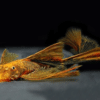-
×

-
×

-
×

-
×

-
×
 Assorted Colour Vampire Crab Geosesarma Sp 2-3Cm
1 × £8.71
Assorted Colour Vampire Crab Geosesarma Sp 2-3Cm
1 × £8.71 -
×

-
×

-
×
 Golden Eyes Vampire Crab - Geosesarma Sp. - Decapod Crustacean
1 × £8.71
Golden Eyes Vampire Crab - Geosesarma Sp. - Decapod Crustacean
1 × £8.71 -
×

-
×

Subtotal: £315.45




















Emily Carter (verified owner) –
I recently introduced the Zebra Oto (Otocinclus Cocama) to my 20-gallon community tank, and I couldn’t be happier! These little catfish are not only adorable with their striped patterns, but they also do wonders for the tank’s algae problem. After about two weeks of having them, I noticed significant reductions in algae growth on my plants and substrate. They are peaceful and blend seamlessly with my other fish.
What sets them apart from other algae eaters, like the common plecos, is their size and temperament. The Zebra Oto stays small (around 2 inches), making them perfect for smaller setups without the risk of outgrowing the tank. Plus, they have such charming personalities—they’re always busy exploring and munching on algae!
My only minor concern was the shipping; they arrived a bit stressed but quickly acclimated once I followed the recommended procedures. If you’re looking for a sustainable way to keep your tank clean while adding beautiful little creatures, I wholeheartedly recommend the Zebra Oto. Whether you’re a beginner or an experienced hobbyist, these fish make an excellent addition to any setup. They’ll thrive best in groups, so consider getting a few!
Emily Carter (verified owner) –
I recently added the Zebra Oto (Otocinclus Cocama) to my 30-gallon community tank, and I couldn’t be happier! These little guys are not only stunning with their unique stripes, but they are also fantastic algae eaters, helping to keep my tank clean and healthy. After about two weeks, I’ve noticed a significant decrease in algae on my plants and glass. They really thrive in groups, so I recommend getting at least three for them to feel secure and social. I initially had a few worries about compatibility with my larger fish, but they’ve found their nook and seem quite happy. One minor concern is they can be a bit shy, so make sure to provide hiding spots. Overall, if you’re looking for freshwater fish that offer both beauty and utility, I highly recommend the Zebra Oto! They’re perfect for any aquarist who values fish welfare and wants to maintain a balanced aquarium. Plus, they arrived promptly and in excellent health, which I always appreciate. I would definitely buy again!